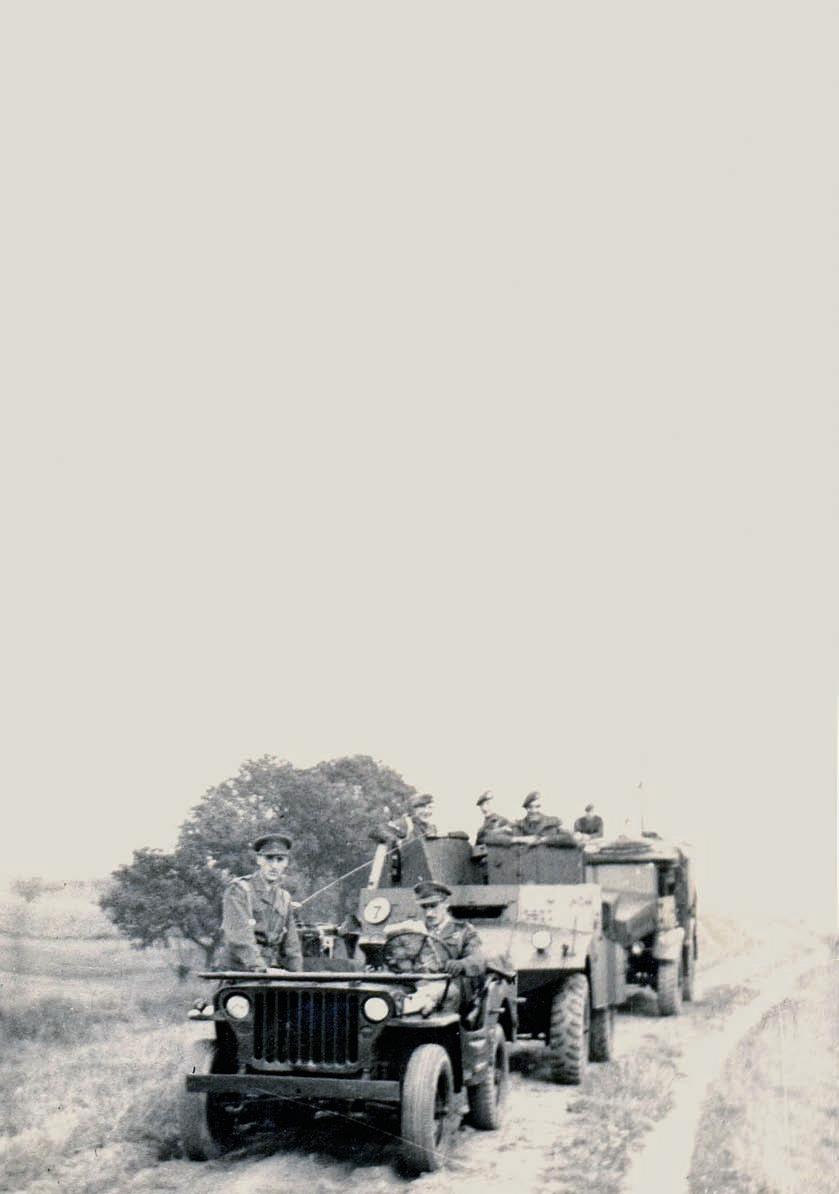
8 minute read
ONA Now and Then
from ONA 92
My colleague Jane Medcalf heroically tries to pack in as many of the offerings as she can: but we hope you will be patient if it takes a while to get them all in. It’s a nice problem to have, though, and we welcome it and thank you. In this issue I’ve enjoyed something of a dialogue with my pre-predecessor, incidentally, celebrated his 80th birthday recently: congratulations to him!) I’ve also been able to witness some of the events recorded in these pages. Wildlife photographer Will Nicholls (06-13) only left the school a year ago, so I had the pleasure of seeing him develop (and win several awards) in his specialist field: his work is outstanding. In July I was also privileged to invite my to the RGS so that we could rename the central part of the Performing Arts Centre
How good it is to see the ONAMagazine becoming fatter and fuller with every issue! I’m grateful to the ever-increasing number of ONs ready and willing to contribute material.
Advertisement
Alister Cox (72-94) (see opposite) (who,
predecessor James Miller (94-08), back in his honour: it is now The Miller Theatre. I was delighted to witness one of those rare and momentous occasions when three generations of RGS boys visited school together. Walter Wood (37-44) and his son Simon (72-77) joined Walter’s grandson, Edwin (current Upper Sixth and a Senior Prefect) (see page 15). ONA Committee member and former President David Goldwater (51-62) presented the previous issue of the ONA Magazine to Walter. Walter described being much inspired by the ‘brilliant’ Michael Roberts (24-31 and 34-41) (see issue 91): that ‘inspiring, unique and eccentric’ teacher of the ’30s and ’40s gave David the impetus and motivation to continue his search of The History of the RGS in its People series (see page 10).
It was my pleasure to get to know W Ray Eden (32-37) as a friend, and my sorrow to mourn his loss at the start of the year. Ray was another of those ONs (so many of them!) who was larger than life, full of fun and humour, and great company. In his last couple of years we’d formed the habit of meeting up at the Cherry Tree for dinner and jazz: but I know that my wife and I were just part of a huge circle of Ray’s friends with whom he developed various cheerful and sociable activities in order to maintain and build friendships. He was a very special man whom we miss.
Earlier this year we received news of the strange and disturbing decades-old tragedy that befell one ON. The state of Cambodia is coming to terms with its terrible history of the ’60s and ’70s under the regime of the infamous Pol Pot and his ‘killing fields’. Bravely facing its darker past, that nation is creating museums and memorials to the victims.
Among them, we have discovered, was John Dawson Dewhirst (61-64), who left the RGS in 1964. He was one of a number of westerners captured and tortured into making false confessions. His ‘confession’, clumsily transcribed by his captors, describes an entirely fictitious history as a CIA agent. He was among many thousands executed, a small individual tragedy that brings home to us the monstrosity and evil of that regime. It has been suggested that we should create some kind of memorial to John Dawson Dewhirst: it’s hard to know what would be appropriate, and we are certainly open to suggestions, particularly perhaps from ONs who knew him.
I’ll close with one last bit of, fortunately happier, history. It was marvellous to hear the now fully-restored organ (which is, of course, a war memorial) in use in the May performance of Haydn’s Little Organ Mass. We hope we’ll make good use of the organ now it’s working again, though we don’t sing hymns in assembly nowadays: the instrument has been acknowledged by The British Institute of Organ Studies. A failed organist myself, I must add that it really does sound well now it’s in full working order.
And that’s just a snapshot of this magazine’s contents! My thanks to all contributors and to all who continue to support their old school: and I hope to see many of you at October’s ONA Dinner at the school, or at the London event in March.
Bernard Trafford Headmaster
ONA Now and Then
A letter from Alister Cox Headmaster 1972-1994
5th March 2014
Iread with huge interest the piece in the latest ONA Magazine by one of the original guinea-pigs of the socalled Flyers system (or should it be Fliers?) –and the accompanying remarks by Bemard Trafford, another product (so we learn) of the same accelerated promotion. I nearly said ‘victim’, but who am I to pass such judgement on one who has reached the dizzying heights of Headmastership of the RGS? I do however note that he echoes Stephen Forster’s (63-69) conclusion that the price paid by some of those chosen for such acceleration was a certain ‘immaturity’ at the next stage of their onward progress. Stephen perhaps rightly dubs it an ‘experiment’, and adds that he doesn’t know ‘how long it lasted’.
I can claim to know the answer and hope that the following notes from the depths of France (where I have now spent 20 happy years) will be of interest to ONs and others. It goes back to discussions I had with my new colleagues when I started at the RGS in the autumn of 1972. I was beginning to learn that change was in the air, and that I would be one of the vehicles of it, and I can quote with some precision the note I received from a colleague whose views I had quickly learned to value: ‘Now that you’ve agreed to so many timely changes could you add one other –the abandonment of the Fliers stream?’ Having no fixed views on the subject, I listened hard to all the pros and cons –the latter including a welter of ‘educational and administrative problems’, as Stephen Forster seems to have fully understood, perhaps through being himself the ‘victim’ of several of them. It was easy to conclude that the system, if it ever had merits, had run its course –and I simply implemented what had become the considered collective view of the staff who had lived with it for a decade.
In view of the accumulated evidence of its demerits I remember asking what expected ‘merits’ it was supposed to deliver, and the answer came in terms of academic excellence as judged by the criterion of Oxbridge entry. That was the era when bright students stayed on post-A Level for that particular high-flying aim (note the recurring imagery!), exactly as did Stephen Forster himself, and I was ‘warned’ by my more cautious colleagues that our Oxbridge results might suffer in seven years’ time, which in fact they didn’t. But the disadvantages of ‘immaturity’ showed themselves from the very start in this race to precocious achievement –except of course for those who suffered the alternative disadvantage of being dropped back in mid-course: Stephen Forster says it all, and I await with him the thoughts of others who knew the system and may have things to say on both sides of the debate.
There was one amusingly useful PR outcome of the launch of this system in 1963. You have only to imagine its effect precisely seven years later on the Oxbridge results: the new generation of Flyers will have made their bid simultaneously with the high-flying products of the year ahead of them. Not only did this deliver an unprecedented score in 1969, but this came just in time to be included in a chart of the latest ‘Oxbridge results’ in the third of Anthony Sampson’s studies of the Anatomy of Britain. This came out in 1971 and told the world that RGS Newcastle was currently the No. 1 winner of Oxbridge Awards! And that was nicely in time to impress candidates for the soon-to-bevacant Headship. I commented about it to the member of staff whose job was to
The Flyers, 1969
show me around, and he had the grace and good-humour to tell me at once the undiluted truth. Young readers of this may be less amused than appalled by this glimpse of the past: fancy a school’s academic reputation depending on the award of Oxbridge scholarships! It worried me at the time, and I did my bit in the coming years to widen the criteria for such judgements. I knew for example that some of our brightest students felt significantly un-impelled to try for them.
Stephen’s comments are so evocative of that period. Yes, in the Sixties life in the RGS Senior School had started with Form 2: the Fliers had to fill out what was called 2.1, and were next year expected to leap beyond the so-called ‘Removes’, which were only for ordinary mortals; others in Form 2 were in stratified classes below them. The abolition of the Fliers stream (as from 1973, to be precise) was immediately accompanied by other reforms, which we never had reason to regret. To the lovely logic of starting with a Form 1 we added an insistence that it would consist of four un-streamed classes, and we proclaimed this fact by attaching to each a House alignment, daring anyone to argue that 1C and 1E and 1H and 1S were anything other than academically equal. I remember recognising that a bonus in this was the underpinning of that valued commodity known as ‘House-spirit’ (committed though it may be to the idea of non-equality!) On this I read with fascination Bernard Trafford’s comments in this same rich issue of the ONA Magazine. He’s so right to doubt that ‘50 years ago’ (but make that 40!) ‘face-paints in House colours would have been encouraged’. We had not even imagined such things in that dull old world!
Alister Cox (72-94)





